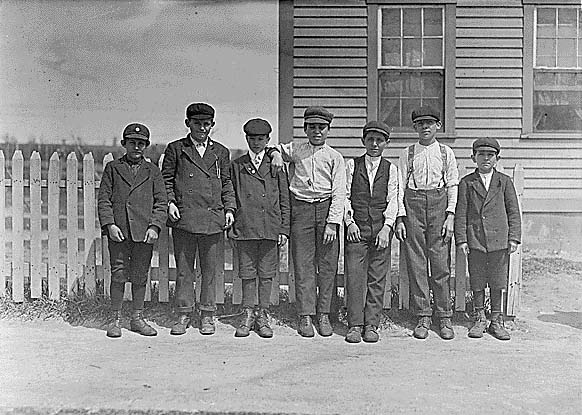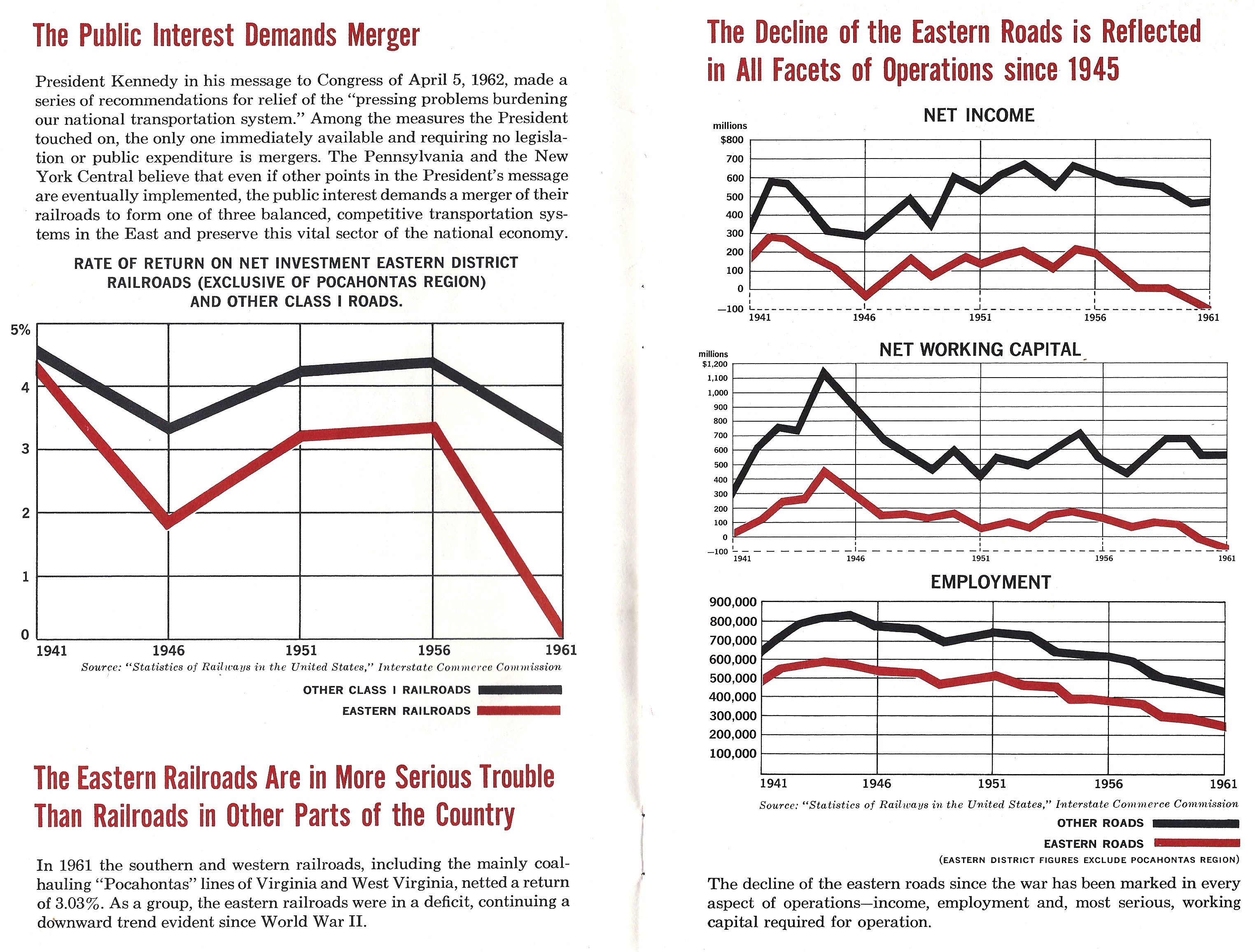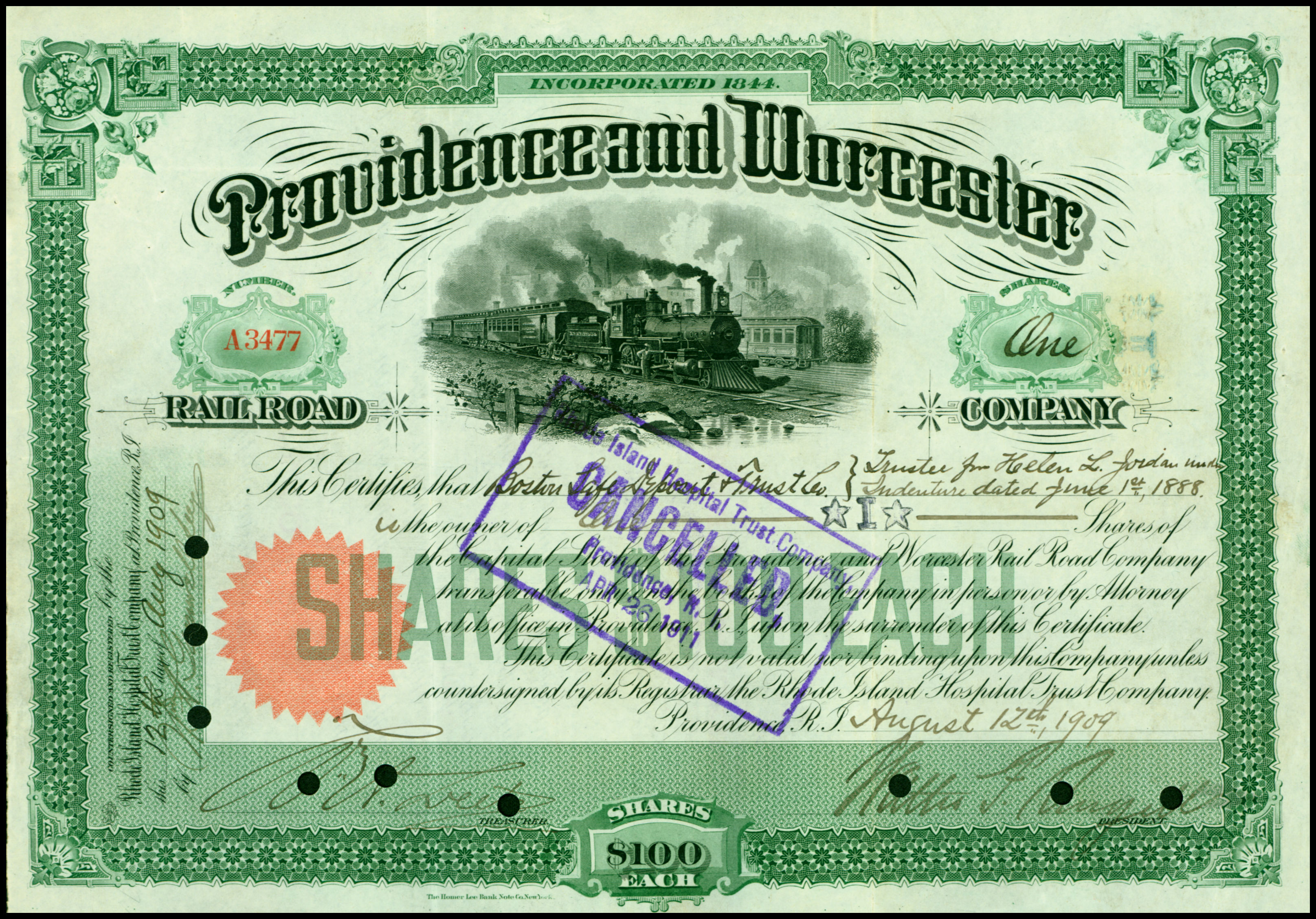|
Pawtuxet Valley Railroad
The Pawtuxet Valley Railroad, chartered in 1872, was a railroad in Rhode Island. It originally connected River Point to Hope, a total distance of three miles, and was operated as a subsidiary of the Hartford, Providence and Fishkill Railroad. Via the chartering of the Pontiac Branch Railroad in 1875, a nearby line was built from Auburn to Pontiac. The two lines were connected on January 1, 1880, forming a contiguous line operated by the New York, Providence and Boston Railroad. The New York, New Haven and Hartford Railroad became the line's operator when it leased the NYP&B in 1892. Passenger service was discontinued on the line between 1922 and 1925, and in 1924 the original connection between the two ends of the line was abandoned. Declining traffic gradually lead to the abandonment of the entire line. The western portion of the line was abandoned in 1965, while the eastern portion survived to see operation by Penn Central beginning in 1969, followed by the Providence and Worceste ... [...More Info...] [...Related Items...] OR: [Wikipedia] [Google] [Baidu] |
I-95
Interstate 95 (I-95) is the main north–south Interstate Highway on the East Coast of the United States, running from US Route 1 (US 1) in Miami, Florida, to the Houlton–Woodstock Border Crossing between Maine and the Canadian province of New Brunswick. The highway largely parallels the Atlantic coast and US 1, except for the portion between Savannah, Georgia, and Washington DC and the portion between Portland and Houlton in Maine, both of which follow a more direct inland route. I-95 serves as the principal road link between the major cities of the Eastern Seaboard. Major metropolitan areas along its route include Miami, Jacksonville, Savannah, Florence, Fayetteville, and Richmond in the Southeast; Washington, Baltimore, Wilmington and Philadelphia, Newark, and New York City in the Mid-Atlantic; and New Haven, Providence, Boston, Portsmouth, and Portland in New England. The Charleston, Wilmington, and Norfolk–Virginia Beach metropolitan are ... [...More Info...] [...Related Items...] OR: [Wikipedia] [Google] [Baidu] |
Rhode Island
Rhode Island (, like ''road'') is a U.S. state, state in the New England region of the Northeastern United States. It is the List of U.S. states by area, smallest U.S. state by area and the List of states and territories of the United States by population, seventh-least populous, with slightly fewer than 1.1 million residents 2020 United States census, as of 2020, but it is the List of U.S. states by population density, second-most densely populated after New Jersey. It takes its name from Aquidneck Island, the eponymous island, though most of its land area is on the mainland. Rhode Island borders Connecticut to the west; Massachusetts to the north and east; and the Atlantic Ocean to the south via Rhode Island Sound and Block Island Sound. It also shares a small maritime border with New York (state), New York. Providence, Rhode Island, Providence is its capital and most populous city. Native Americans lived around Narragansett Bay for thousands of years before English settler ... [...More Info...] [...Related Items...] OR: [Wikipedia] [Google] [Baidu] |
River Point, Rhode Island
River Point in West Warwick, Rhode Island, United States, is a community made up of mill houses and three mills - the Valley Queen Mill, the Royal Mill and the Cotton Shed. Built in 1834 by the Greene Company, the Valley Queen Mill is the oldest of the three buildings. It originally operated as a cotton factory, producing coarse cotton cloths under the Greene Company name. In 1888, B.B.& R. Knight Company, the textile giant that made Fruit of the Loom products, purchased the Valley Queen Mill. Over the next couple of years, they built the Royal Mill and the Cotton Shed. B.B. & R. Knight was a complete textile operation with combing, spinning and weaving facilities. In 1931, the McIver Family, which owned The Original Bradford Soap Works, bought the Valley Queen Mill from the bankruptcy proceedings related to winding down the business affairs of the B.B. & R. Knight Company. In the 1960s, the Howland family took over the business. Under the leadership of the Howland family, today ... [...More Info...] [...Related Items...] OR: [Wikipedia] [Google] [Baidu] |
Hope, Rhode Island
The Hope Village Historic District is a historic rural mill settlement within Hope Village in Scituate, Rhode Island. Hope Village is located on a bend in the North Pawtuxet River in the southeastern corner of Scituate. Industrial activity has occurred in Hope Village since the mid-eighteenth century. Surviving industrial and residential buildings in the Historic District date back to the early 19th century. The village center sits at junction of Main Street ( Rhode Island Route 115) and North Road ( Rhode Island Route 116). Hope Village radiates out from the center with houses on several smaller side streets in a compact configuration. Currently there is little commercial or industrial activity in Hope Village and none in the Historic District. The present stone mill building on the south side of Hope Village was built in 1844 by Brown & Ives of Providence, expanded in 1871 and modified in 1910. Approximately one quarter of the village's current housing stock was built as mil ... [...More Info...] [...Related Items...] OR: [Wikipedia] [Google] [Baidu] |
Hartford, Providence & Fishkill Railroad
The New York and New England Railroad (NY&NE) was a railroad connecting southern New York State with Hartford, Connecticut; Providence, Rhode Island; and Boston, Massachusetts. It operated under that name from 1873 to 1893. Prior to 1873 it was known as the Boston, Hartford and Erie Railroad, which had been formed from several smaller railroads that dated back to 1846. After a bankruptcy in 1893, the NY&NE was reorganized and briefly operated as the New England Railroad before being leased to the competing New York, New Haven and Hartford Railroad in 1898. Today, most of the original New York and New England lines have been abandoned. A segment in Massachusetts is now part of the MBTA's Franklin Line providing commuter rail service to South Station in Boston, and another segment near East Hartford and Manchester, Connecticut, is used for freight service on the Connecticut Southern Railroad. Other portions in Connecticut and Rhode Island have been converted to rail trails. Histor ... [...More Info...] [...Related Items...] OR: [Wikipedia] [Google] [Baidu] |
Auburn, Rhode Island
Auburn is an urban neighborhood in the east-central part of Cranston, Rhode Island. The village contains the Auburn Branch of the Cranston Public Library The Cranston Public Library is the public library system serving Cranston, the second largest city in Rhode Island. The first library in Cranston was formed in 1797, while the library system was formed in 1966 by the Cranston City Council. The .... References Neighborhoods in Rhode Island Populated places in Providence County, Rhode Island Cranston, Rhode Island {{RhodeIsland-geo-stub ... [...More Info...] [...Related Items...] OR: [Wikipedia] [Google] [Baidu] |
Pontiac, Rhode Island
Pontiac is a historic village in Warwick, Rhode Island, and part of the . History Native Americans referred to the area as "Papepieset" or "Toskiounke." After arriving in 1642, the early English settlers called the area "Great Weir" because fishing weirs were used to catch fish near the falls. After a bridge was constructed in the locality, the area became known as "the great bridge near the weir," and eventually " Capt. Benjamin Greene's bridge" then "Arnold's bridge." After Senator John Hopkins Clarke purchased the water rights, the region assumed the name of "Clarksville." After purchasing the area, the Pontiac Manufacturing Company named the area "Pontiac" after Chief Pontiac a Northwestern Indian chief. Allegedly, "Mr. Clark, while out in Michigan, saw the picture of the old chief, Pontiac, and on his return had it engraved, to be used as a label on his goods. The name gradually became attached to the village after he left, though many continued to call it " Arnold's Bridge ... [...More Info...] [...Related Items...] OR: [Wikipedia] [Google] [Baidu] |
New York, Providence And Boston Railroad
The New York, Providence and Boston Railroad, normally called the Stonington Line, was a major part of the New York, New Haven and Hartford Railroad between New London, Connecticut and Providence, Rhode Island. It is now part of Amtrak's high-speed Northeast Corridor. History Prior to the building of the NYP&B, travelers between New York City and Boston had to pass around Point Judith, Rhode Island and its rough waters to reach the Boston and Providence Railroad in Providence. The B&P was completed in 1835 and began operating the steamer ''Lexington'' between Providence and New York, adding the ''Massachusetts'' in 1836. The New York and Stonington Railroad was chartered in Connecticut in May 1832 and the New York, Providence and Boston Railroad in Rhode Island in June of that year to fix the problem. On July 1, 1833 they consolidated to form a new New York, Providence and Boston Railroad. Ground was broken by the subsidiary Providence and Stonington Railroad at Stonington, C ... [...More Info...] [...Related Items...] OR: [Wikipedia] [Google] [Baidu] |
New York, New Haven And Hartford Railroad
The New York, New Haven and Hartford Railroad , commonly known as The Consolidated, or simply as the New Haven, was a railroad that operated in the New England region of the United States from 1872 to December 31, 1968. Founded by the merger of the New York and New Haven Railroad, New York and New Haven and Hartford and New Haven Railroad, Hartford and New Haven railroads, the company had near-total dominance of railroad traffic in Southern New England for the first half of the 20th century. Beginning in the 1890s and accelerating in 1903, New York banker J. P. Morgan sought to monopolize New England transportation by arranging the NH's acquisition of 50 companies, including other railroads and steamship lines, and building a network of electrified trolley lines that provided interurban transportation for all of southern New England. By 1912, the New Haven operated more than of track, with 120,000 employees, and practically monopolized traffic in a wide swath from Boston to New ... [...More Info...] [...Related Items...] OR: [Wikipedia] [Google] [Baidu] |
Penn Central Transportation Company
The Penn Central Transportation Company, commonly abbreviated to Penn Central, was an American class I railroad that operated from 1968 to 1976. Penn Central combined three traditional corporate rivals (the Pennsylvania, New York Central and the New York, New Haven and Hartford railroads), all united by heavy service into the New York metropolitan area and (to a lesser extent) New England and Chicago. The new company failed barely two years after formation, the largest bankruptcy in U.S. history at the time. The Penn Central's railroad assets were nationalized into Conrail along with the other bankrupt northeastern roads; its real estate and insurance holdings successfully reorganized into American Premier Underwriters. History Pre-merger The Penn Central railroad system developed in response to challenges facing northeastern American railroads during the late 1960s. While railroads elsewhere in North America drew revenues from long-distance shipments of commodities suc ... [...More Info...] [...Related Items...] OR: [Wikipedia] [Google] [Baidu] |
Providence And Worcester Railroad
The Providence and Worcester Railroad is a Class II railroad operating of tracks in Rhode Island, Massachusetts, and Connecticut, as well as New York via trackage rights. The company was founded in 1844 to build a railroad between Providence, Rhode Island, and Worcester, Massachusetts, and ran its first trains in 1847. A successful railroad, the P&W subsequently expanded with a branch to East Providence, Rhode Island, and for a time leased two small Massachusetts railroads. Originally operating on a single track, its busy mainline was double-tracked beginning in 1853, following a fatal collision that year in Valley Falls, Rhode Island. The P&W operated independently until 1888, when the New York, Providence and Boston Railroad (NYP&B) leased it; the New York, New Haven and Hartford Railroad obtained the lease in 1892 when it purchased the NYP&B. The P&W continued to exist as a company, as special rules protecting minority shareholders made it prohibitively expensive for th ... [...More Info...] [...Related Items...] OR: [Wikipedia] [Google] [Baidu] |






